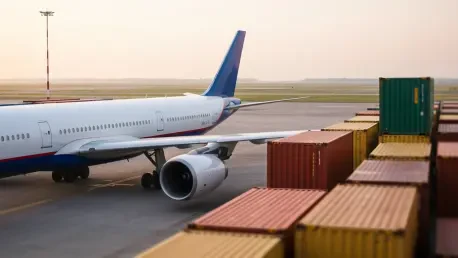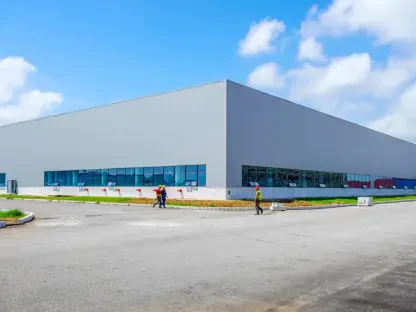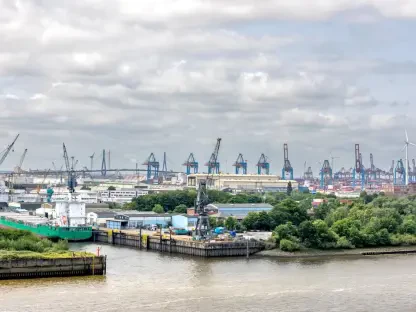In an era where global supply chains are under constant pressure to deliver faster and more efficiently, the air cargo industry stands at a pivotal juncture with Airbus’ A350 freighter emerging as a beacon of innovation. With e-commerce booming and demand for air freight capacity soaring, the confirmation of MNG Airlines Cargo’s order for two A350 freighters on October 2 has ignited fresh discussions among industry stakeholders. This roundup dives into diverse opinions, tips, and analyses from various corners of the aviation and logistics sectors to unpack the significance of this order, the aircraft’s appeal, and the challenges ahead. The goal is to provide a comprehensive snapshot of how this development is perceived and what it signals for the future of cargo transportation.
Capturing the Surge in A350 Freighter Interest
MNG Airlines’ Order as a Catalyst
The recent confirmation by MNG Airlines, a Turkish cargo carrier, of two A350 freighters has been hailed as a significant milestone for Airbus. Industry observers note that this move, following an initial Memorandum of Understanding at the Paris Air Show in June, underscores growing confidence in the aircraft’s potential to modernize fleets. Many see this as a strategic step by MNG to position itself as a leader in efficient cargo operations amid rising global demand.
Beyond this specific order, the broader context reveals a busy period for Airbus, with Air China Cargo announcing plans for six A350Fs plus options for four more, and Korean Air converting seven existing passenger A350 orders to the freighter variant. Analysts across the board highlight that such activity in a single month reflects a collective push toward adopting cutting-edge solutions in air freight. This trend, they argue, is driven by the need to handle increasing cargo volumes with greater fuel efficiency.
Some logistics consultants, however, caution that while the enthusiasm is palpable, smaller carriers like MNG must navigate financial and operational risks when integrating such advanced aircraft. Their perspective emphasizes the importance of tailored strategies to ensure that investments align with long-term market needs rather than short-term hype.
Broader Market Trends and Opinions
Across the industry, the A350 freighter’s order book, currently standing at 74 firm commitments from 12 customers, garners widespread attention. Major players such as Turkish Airlines with five units and Cathay Cargo with six units plus options for 20 more are often cited as evidence of robust market trust. Aviation market watchers point out that this diverse customer base signals a universal appeal for the aircraft’s capabilities.
Contrasting views emerge when discussing the eight cancellations recorded this year. While some industry voices attribute these to financial recalibrations amid economic uncertainty, others suggest hesitation driven by delivery delays. This split in opinion highlights a critical debate on whether the current order surge represents unwavering confidence or a gamble on an unproven timeline.
A third perspective from fleet planning experts focuses on the strategic timing of orders. They advise carriers to leverage this period of high interest to negotiate favorable terms with Airbus, emphasizing that early adopters could gain a competitive edge if delivery schedules stabilize. This tip underscores the importance of proactive engagement in a rapidly evolving market.
Why the A350 Freighter Garners Attention
Unique Features Driving Appeal
The A350 freighter’s standout features, including the largest main deck cargo door in its class, a payload capacity of 111 tons, and a range of 8,700 km, are frequently praised by industry analysts. Many agree that these attributes position the aircraft as a game-changer for long-haul cargo efficiency. Logistics firms, in particular, highlight how such capabilities can streamline operations for high-volume routes.
Airline fleet managers offer a complementary view, noting the aircraft’s adaptability to varied operational needs. With adopters like Singapore Airlines securing seven units and Etihad Cargo matching that number, the consensus is that the A350F caters to both established hubs and emerging markets. This versatility is seen as a key factor in its widespread adoption.
However, a note of caution comes from maintenance and engineering teams who point out that integrating such an advanced aircraft requires significant upfront investment in training and infrastructure. Their advice to operators is to begin preparatory work well in advance of delivery to mitigate initial issues. This practical tip aims to balance excitement with operational readiness.
Competitive Edge Amid Challenges
In competitive discussions, the A350 freighter is often compared favorably to rival offerings from Boeing, with many industry voices citing its fuel efficiency as a decisive advantage. Cargo strategists argue that in an era of rising fuel costs and sustainability pressures, this edge could redefine fleet planning for major carriers over the next decade.
A differing opinion surfaces from risk analysts who warn that ongoing delivery delays, now pushed to the second half of 2027, could drive some customers toward alternatives. They suggest that Airbus must prioritize transparent communication to retain trust among its client base. This perspective sheds light on the delicate balance between innovation and reliability.
Meanwhile, supply chain consultants offer a forward-looking tip: carriers should use this interim period to analyze competitor moves and align fleet upgrades with the A350F’s eventual rollout. Their insight emphasizes the importance of strategic patience, ensuring that operators are positioned to capitalize on the aircraft’s capabilities once it enters service.
Navigating Delivery Delays and Market Dynamics
Understanding the Timeline Setbacks
The delay in the A350 freighter’s entry into service, now slated for the second half of 2027 after an initial target two years prior, remains a hot topic. Manufacturing experts attribute these postponements to the complexities of developing a pioneering cargo aircraft, suggesting that such hurdles are par for the course in aviation innovation. They remain optimistic about Airbus meeting the revised schedule.
Regional market analysts provide a nuanced take, pointing out that delays could disproportionately impact fast-growing cargo markets in Asia, where demand for capacity is surging. In contrast, established European hubs might absorb the delay with less disruption due to existing fleet redundancies. This geographic disparity in impact is a key point of discussion among global logistics planners.
A practical recommendation from project management specialists is for Airbus and its customers to enhance contingency planning. They advise joint task forces to address potential bottlenecks in production, ensuring that both parties are aligned on mitigating risks. This collaborative approach is seen as vital to maintaining momentum despite setbacks.
Market Confidence Through Order History
Tracing the order trajectory of the A350 freighter reveals sustained interest from diverse stakeholders, starting with early commitments a few years back to recent additions like Starlux Airlines. Industry historians note that this consistent growth in orders reflects a deep-seated belief in the aircraft’s transformative potential, even as timelines shift.
A contrasting viewpoint comes from economic analysts who scrutinize fluctuations, such as potential order reductions by certain carriers. They argue that these adjustments might mirror broader economic trends rather than specific doubts about the A350F. This interpretation invites a wider lens on how external factors shape aviation decisions.
Operational advisors add a tactical tip for airlines and lessors: diversify partnerships to hedge against uncertainties in delivery schedules. By fostering relationships with multiple manufacturers or exploring interim leasing options, they believe carriers can maintain flexibility. This strategy is presented as a buffer against the unpredictability of new aircraft rollouts.
Key Takeaways from the A350 Freighter Buzz
Reflecting on the myriad perspectives, several core insights emerge from this roundup. The A350 freighter’s order book of 74 units, bolstered by MNG Airlines’ recent confirmation, stands out as a testament to its market appeal despite cancellations. Industry voices consistently recognize the aircraft’s innovative design as a driver of efficiency, while acknowledging that delivery delays to 2027 pose logistical challenges.
Differing opinions on cancellations and delays reveal a complex landscape where optimism coexists with caution. Strategic tips, such as investing in early training and infrastructure or negotiating favorable terms during this high-interest phase, are frequently mentioned as ways to prepare for the aircraft’s debut.
A balanced view also emerges on competitive dynamics, with many agreeing that Airbus holds a strong position against rivals, provided it manages customer expectations effectively. This synthesis of enthusiasm and pragmatism paints a picture of an industry eager to embrace change, yet mindful of the hurdles along the way.
Reflecting on the Path Forward
Looking back on the discussions captured in this roundup, it is clear that the Airbus A350 freighter has sparked significant excitement and strategic planning across the air cargo sector. The insights gathered from diverse industry perspectives highlight both the potential and the pitfalls of this innovative aircraft. As a next step, stakeholders are encouraged to deepen collaboration with Airbus to address delivery challenges, ensuring smoother integration when the aircraft finally arrives.
Beyond immediate actions, a broader consideration is the alignment of fleet modernization with long-term sustainability goals. Industry players are advised to explore funding mechanisms or partnerships that could ease the financial burden of adopting advanced technology. This approach aims to secure a competitive advantage in an evolving market.
Finally, staying informed about regulatory shifts and technological advancements in cargo aviation is deemed essential. By maintaining agility and fostering dialogue across sectors, carriers and logistics firms can position themselves to not only adapt to the A350 freighter’s impact but also shape the future standards of global freight transportation.









